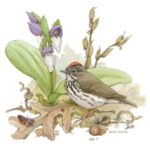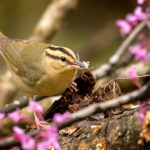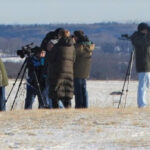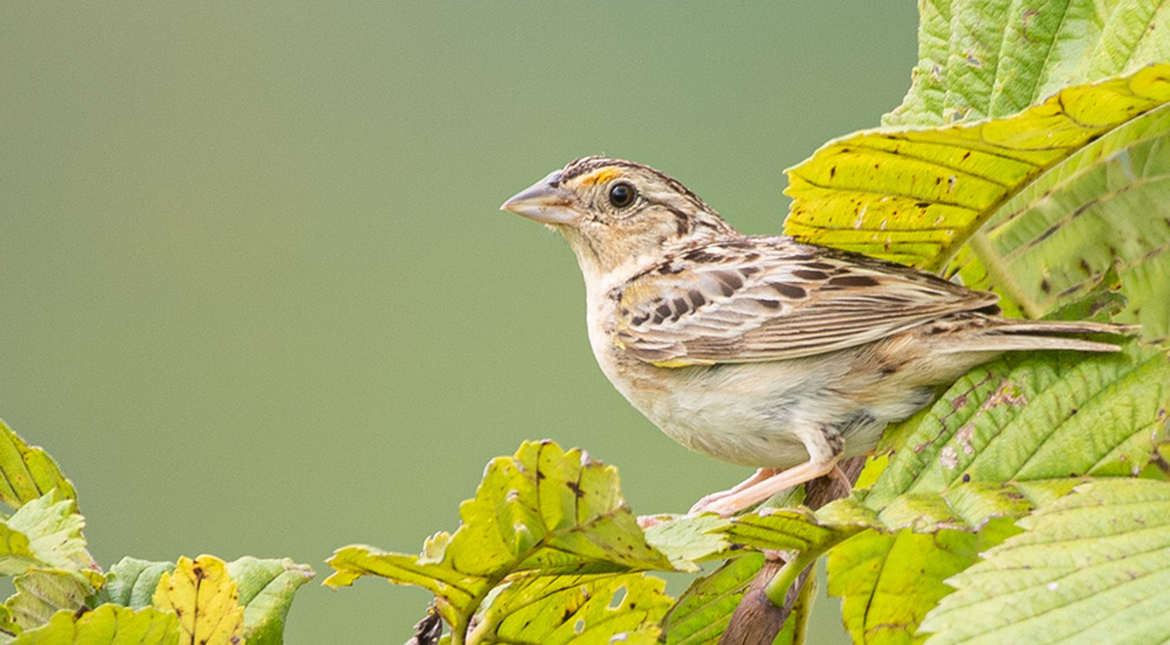
Nocturnal Flight Calls
The night before birding on a given morning during migration is spent excitedly talking about the predicted migration with my friends. Messages are exchanged on anything from wind patterns to Cornell’s BirdCast and predicting which species we think will finally make it to our area for the first time this season. Then we all head to bed, excited for the migrants that await us in the morning.
Some of these nights, there is enough activity overhead that I try to listen to what birds are flying over. When it’s quiet, you can hear faint chips overhead as birds pass by. With a microphone, you’re able to hear them much clearer and even identify them to species! These “nocturnal flight calls” provide a whole new insight and level of excitement to birding in migration!
I clearly remember sitting in the audience at one of the Ohio Young Birders Club conferences. The keynote speaker was telling us how he was able to listen to the birds migrating overhead each night and identify them to species by call or spectrogram. I was no older than middle school at the time, but it stuck with me. I knew someday I wanted to be able to do that myself, and see what birds migrated over my house on a given night.
This spring, I decided it was finally time to make the dream come true. I’d seen a lot of eBird lists coming in with recordings marked “NFC”. These “NFC’s,” or Nocturnal Flight Calls, are a series of typically short notes given by birds during migration. Many are high-pitched and similar enough that they can’t be identified to species. However, some, such as Yellow-billed Cuckoo, give calls similar to those you would hear on a typical summer morning. Thankfully, I had a few friends who had experience with these identifications, and others who were also trying to learn. This allowed us to work through IDs and technical difficulties together.
A very busy road runs behind my house here in Clermont County, making hearing overhead birds difficult at times. Once it was late enough at night, usually around midnight, I would go set out my microphone. In my case, this was a sensitive directional microphone in a 5-gallon bucket, allowing sound to be funneled into the mic. The cable was usually run 30 feet or so over to my computer, where I had headphones plugged in and Cornell’s Raven Lite software open. Some people run their NFC mics all night and go through recordings the next morning to see what calls they detect. Since I am just getting started with this, I chose to run the mic only as long as I could be awake, and listen to the calls in real time. This allowed me to learn more in the moment. As I watched the spectrogram of the live recording coming in, I would save just short segments as I heard them.

The area my house is in is relatively urban, just adding significance to the variety and numbers of species passing overhead. There is little habitat anywhere in the county for some of the species I observed to even stop, making it even more exciting to hear them!
Within my first hour of running the microphone, I was already amazed at the diversity overhead. April 23rd was still early enough in the season to detect earlier migrants, such as sparrows. My NFCs were mostly Savannah, Chipping, and White-throated Sparrows. Some of the exciting surprises were difficult birds for Clermont County, such as Grasshopper Sparrow, Pine Warbler, and Great Egret! I was very excited after this night and couldn’t wait to see what came later in the season.
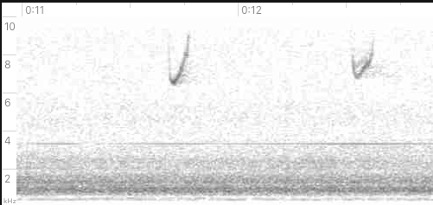
Chipping Sparrow
The call of a Chipping Sparrow is a “U” shape, often with a second line in the middle (as shown in the second call) or sometimes a single “U” as shown in the first.
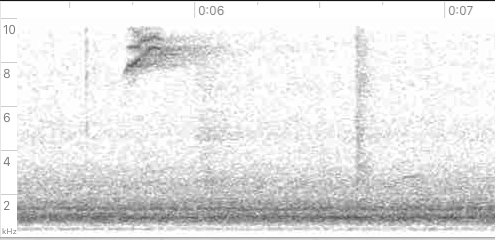
Grasshopper Sparrow
A few days later on April 28th, my sister, Cassidy, and I decided to try the microphone again. Due to less road noise in the middle of the week, we were able to start as early as 10:45pm. As I went outside to set up the microphone, I heard a Spotted Sandpiper calling overhead and knew that this was going to be a fun night to listen. A few unidentified warblers called too distantly to confidently ID, but still had me excited to see the species change in such a short time. Sparrow numbers were significantly lower, and thrushes had begun to pick up. Hermit and Veery both were recorded. The most exciting finds of the night were the Least Sandpiper (a very fun yard bird) as well as THREE Virginia Rails, one of my most wanted birds for Clermont County in general.
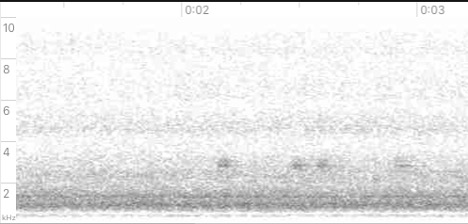
Virginia Rail
Four faint “Kek” calls of a Virginia Rail. They have one of the lower calls I heard over my house. They were easier to hear than the computer picked up.
The third (and unfortunately final) time I ran the microphone this season just happened to be the craziest night yet! May 18th was just after the main peak in migration for the Cincinnati area, and I had no idea what to expect. I only had an hour to run the microphone before bed, because I wanted to get early for one of the last big pushes of birds in the area. I went outside to set up the mic, and within the first 30 seconds I heard 8 Swainson’s Thrushes overhead. Once recording started, Swainson’s Thrushes were calling once every 15 seconds, resulting in a call rate of nearly 250 birds per hour! A number of Veery and Gray-cheeked Thrushes called as well. Other surprises included 45 Indigo Buntings, Blue Grosbeak, Grasshopper Sparrow, Green Heron, and two Yellow-billed Cuckoos!
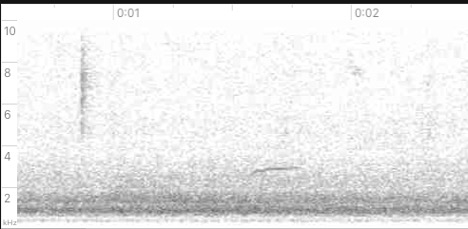
Swainson's Thrush
One of the almost 250 Swainson’s Thrushes that passed over my house in the hour I ran the microphone! The thrushes all have pretty distinct calls while migrating.
Learning to identify these calls wasn’t easy. I spent a lot of time on both oldbird.org and eBird’s Macaulay Library, as well as texting friends for help. It took time to familiarize myself with the most common calls and learn to help classify them into families. There are certain common patterns to recognize, you must note the time and frequency of every call, and have patience while browsing other samples. These were the most beneficial ways for me to learn. It may be a bit of a learning curve, but was a very fun new way to experience migration. When birds are migrating overhead, you never know what could fly over your yard!
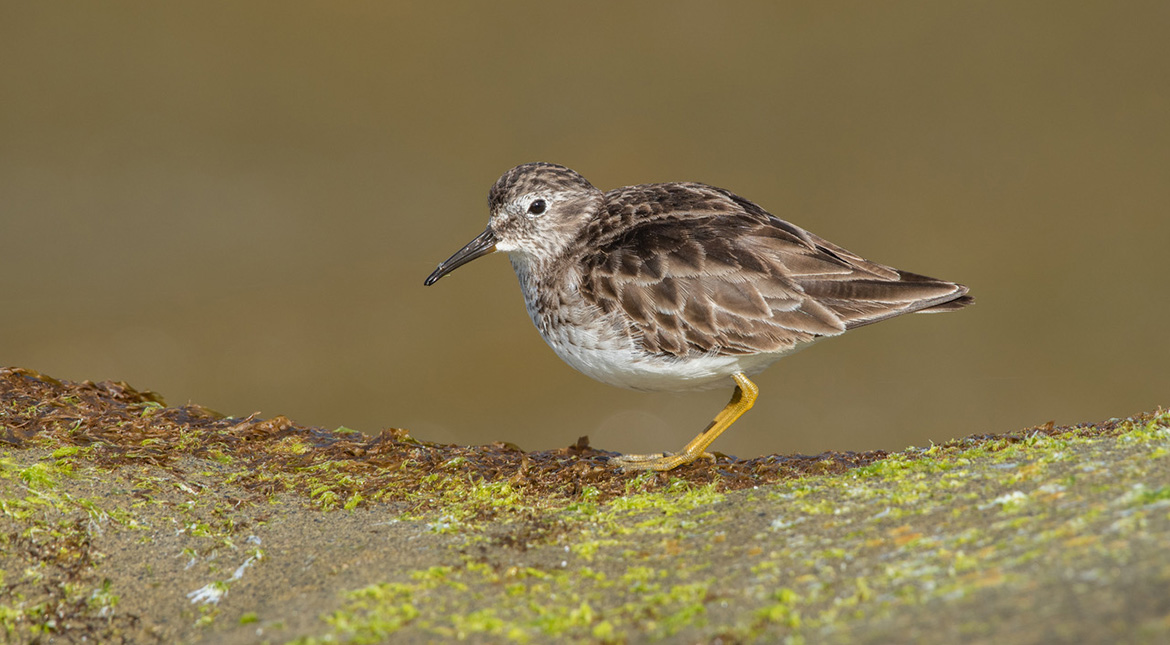
I was able to record a Least Sandpiper during the April 29, 2020 session below.

Least Sandpiper
eBird Checklist - April 23, 2020
This checklist features 16 species, 15 with audio recordings. Click Here
eBird Checklist - April 29, 2020
This checklist features 10 species, 8 with audio recordings. Click Here
eBird Checklist - May 18, 2020
This checklist features 14 species, 13 with audio recordings. Click Here

